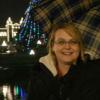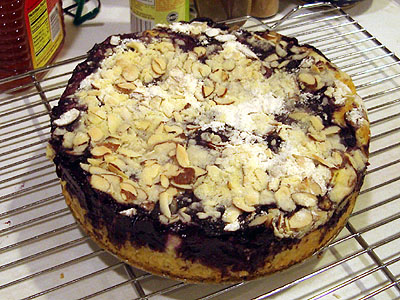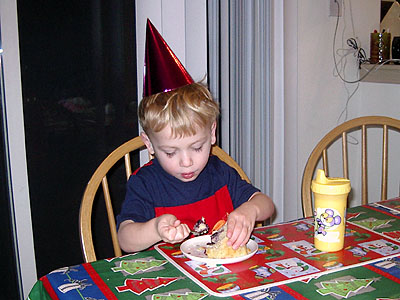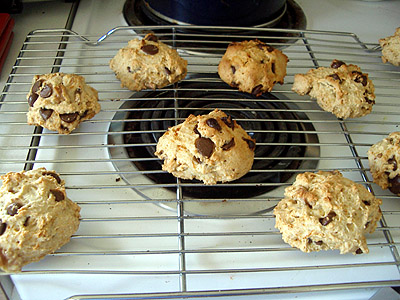
White Bread: sandwiches and toasting
This is a white bread I finally settled on about 20 years ago, when I was baking all the bread for my family of four. We ate so much, I just worked it up for two loaves, so that's what I've got here. It's followed by the single loaf approximations I used earlier this week for the loaf pictured here. It's a good, tasty white bread for toasting or making sandwiches, and if it gets stale, it makes fantastic french toast.


WHITE BREAD
(two 9x5 loaves)
7-1/2 cups bread flour
1/2 cup sugar
1 Tbsp. salt
1-1/2 Tbsp. instant yeast (or two 1/4-ounce packets)
mix 4 cups of the flour with the other dry ingredients.
heat to 120F:
2-1/4 cups milk
1/4 cup butter or margarine
add this, along with 1 egg, lightly beaten to your flour/yeast dry mixture and blend until evenly incorporated.
add the remaining 3-1/2 cups flour, a cup at a time, into the dough. it should begin to hold together after about two cups additional. if you're using a mixer, you can continue with that process, or turn the dough out to work the rest of the flour in by hand.
grease a large bowl, plop your dough ball into it, and turn it, cover with a kitchen towel, and set it to rise until doubled in bulk. depending on your ambient temperature, it could take 1-3 hours.
when it's doubled, punch it down in the bowl, and turn it out onto a floured work surface. knead it a few minutes to work out the bubbles, add a little flour if it sticks to your hands. flatten it out into a rectanglish-shape with your hands, and divide it evenly. flatten the pieces out a little more, then roll up tightly as you can, pinching the closing seams together, tucking the ends in if need be, and set them to rise (covered) in greased loaf pans. the second rise goes much faster, again, depending on ambient temperature, 30-60 minutes is typical.
preheat your oven to 375F, and bake for 10 minutes, then reduce to 350F for an additional 30 minutes. keep watch on it, I think my oven runs about 25 degrees hot, at least as compared to Floyd's temperatures. if all goes well, it should just roll out of the loaf pan when tipped on its side. cool it on a rack, resting on its bottom, and the rack will leave cutting guides for you.

Notes
If you coat the top crust with melted butter or margarine while it's hot, it will stay soft. The advantage to this is that slicing the bread won't crush the loaf. But you already know that a loaf like this should be sliced laying on its side anyway, right? It's another deterrent to crushing, and it exposes the cutting guides you made on the bottom of the loaf. And don't forget to use a serrated bread knife!
I skip the step of trying to heat milk without scalding it on the bottom of the saucepan by using powdered milk (1 cup) and the same amount (2-1/4 cups) of comfortably warm tap water in place of dairy milk.
This recipe can also be made into six mini-loaves if you want to have a special little dinner where everyone gets their own loaf of bread. Temperature is the same, adjust your own timing.
Single 9x5 Loaf:
about 4-1/2 cups bread flour
1 Tbsp. or one 1/4-ounce packet dry yeast
3 Tbsp. sugar
1-1/2 tsp. salt
1/3 cup powdered milk
1 cup warm water
2 Tbsp butter
1 egg
start your dry mix using 2 cups flour, add the remaining in after the liquids.












 If there is one book that I would recommend to an amateur baker interested in experimenting with artisan breads, Peter Reinhart's
If there is one book that I would recommend to an amateur baker interested in experimenting with artisan breads, Peter Reinhart's 